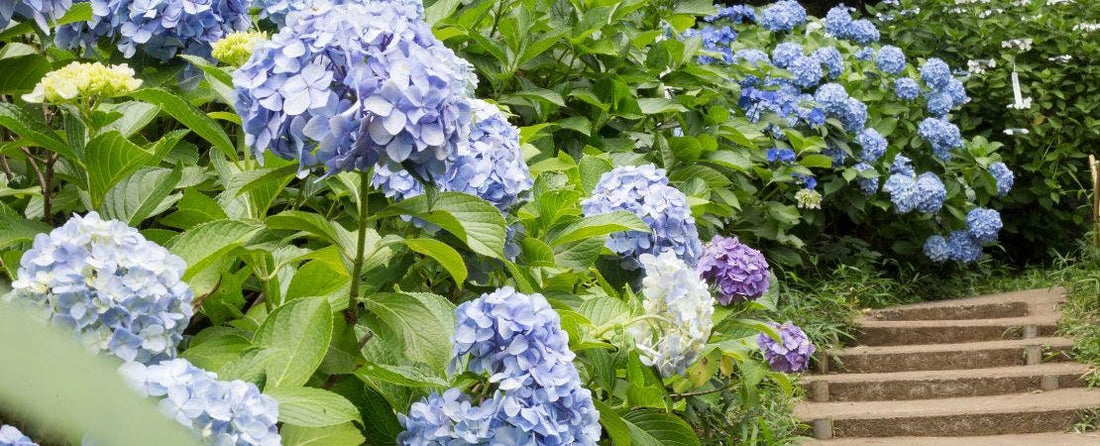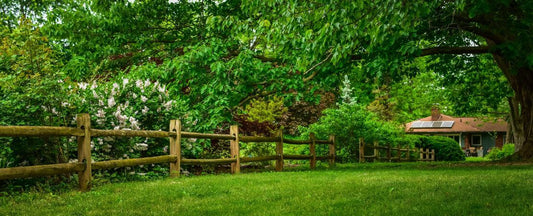How to Prune a Hydrangea

Pruning Tips for How to Prune a Hydrangea Bush
Hydrangea shrubs can live for many years without ever needing to be pruned, but if your shrubs grow out of bounds or lose flowering vigor, then there are some essential hydrangea pruning guidelines you must follow to ensure bountiful hydrangea flowers the next season.
How to Prune Bigleaf, Lacecap, or Mophead Hydrangeas (Hydrangea macrophylla)
These generally bloom on old wood and require little pruning. Prune spent blooms immediately after flowering (midsummer), or remove only dead, damaged or unsightly wood. Avoid pruning in late winter or early spring, when the flower buds are most vulnerable.
Hydrangea macrophylla begin blooming in early to midsummer and can continue until summer's end, so they set their bloom buds during late summer or early fall on old wood. When pruning mophead hydrangeas, you have two options, and will probably end up doing a combination of both:
1. Cut back the flowering shoots to the next bud, giving the branches a trim that removes the spent hydrangea flower heads without damaging the buds that will form next year's flowers. Do this right after flowering, but before midsummer.
2. On older shrubs that have lost flowering vigor, cut up to a third of entire stems at the mophead hydrangea's base in late winter to improve flowering vigor. Ideally, you should cut the oldest stems, leaving younger mature stems that are loaded with buds for next year, but sometimes you have a lopsided or crowded hydrangea bush that must be pruned to maintain a pleasing shape. The main purpose of cutting off entire stems is to do away with old or poorly flowering parts of the shrub, letting in more air and light AND encouraging the growth of healthy new branches. In climates that may experience warm spells in winter, be careful of the urge to get out in the garden and start pruning hydrangeas before late winter. If you prune too early, you could encourage dormant buds to break, leaving tender growth susceptible to frost and freeze damage.
Exception: If you have a reblooming hydrangea variety such as Penny Mac that flowers on new wood as well as old wood, you'll want to prune a little every year to keep the new wood coming.
How to Prune Oakleaf Hydrangea (Hydrangea quercifolia)
You can get away without pruning oakleaf hydrangeas at all, but if you want to keep the shrub and flowers well-shaped, cut dead stems back at the base in late winter or early spring.
Hydrangea arborescensand H. paniculata:
These hydrangea bushes bloom on new wood and actually produce larger blooms if cut back to the ground in late winter.
How to Prune Smooth Hydrangea (Hydrangea arborescens)
This is one of the easiest types of hydrangeas to prune. Because it blooms only on new wood, you can just cut it back to the ground in late winter, before any new buds appear. If you experience some flopping of flowering branches, then leave a framework of old growth to help support the branches by only cutting stems back to 2 feet from the ground.
How to Prune PeeGee or Panicle Hydrangeas(Hydrangea paniculata)
Prune panicle hydrangeas in late winter to keep the plants from becoming overgrown and encourage more new growth, more hydrangea flower buds, and larger blooms. You can remove dead flowers, as soon as they become unattractive and clean up the overall shape of the plant. Panicle hydrangeas are tall, ideal for borders and hedges. Due to their height, they are sometimes referred to as a hydrangea tree.
Pruning Climbing Hydrangea (Hydrangea petiolaris)
Climbing hydrangea requires little to no pruning, but if you need to trim it to keep it in bounds, you should prune it just after flowering. Cut back last year's flower shoots to 1 to 2 inches and prune out shoots that fail to cling or have pulled away from their support.
Remember, hydrangea bushes are shade tolerant, but they do require adequate sunlight and irrigation to bloom properly. In northern climates and coastal areas, Hydrangeas will grow beautifully in full sun, but in warmer southern areas, a location in part shade where the shrub receives full to partial morning sun with protection from harsh afternoon sun is ideal. Placed in the right location, given ample moisture, and pruned using the guidelines above, your Hydrangeas will be an abundant source of gorgeous blooms long into the future.




